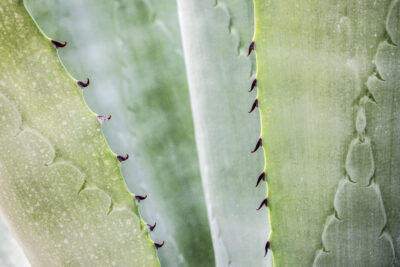
Can Succulents Be Revived After Drying Out?

Succulents have become incredibly popular in recent years due to their unique and beautiful appearance, as well as their reputation for being low-maintenance plants. However, even the most experienced succulent owners may occasionally find themselves with a dried-out plant on their hands. Whether it's due to neglect, overwatering, or simply forgetting to water, the question remains: can succulents be revived after drying out?
We will explore the topic of reviving dried-out succulents. We will discuss the signs of a dehydrated succulent, the causes of dehydration, and the steps you can take to bring your succulent back to life. Additionally, we will address common misconceptions about succulent care and provide tips for preventing your plants from drying out in the first place. Whether you're a seasoned succulent enthusiast or a beginner, this article will provide you with the knowledge and tools needed to revive your beloved plants and keep them thriving.
- Yes, succulents can be revived after drying out
- Ensure the plant is not receiving too much sun or heat
- Move the succulent to a shadier location
- Water the plant thoroughly, allowing excess water to drain
- Avoid overwatering, as this can lead to root rot
- Gradually increase the amount of water over time
- Mist the leaves with water to increase humidity
- Trim any dead or dried out parts of the plant
- Provide proper care and maintenance for the succulent going forward
- Frequently Asked Questions
Yes, succulents can be revived after drying out
It's a common misconception that once succulents have completely dried out, they are beyond saving. However, with the right care and attention, it is possible to revive these resilient plants.
1. Assess the damage: Before taking any action, it's important to evaluate the extent of the drying out. Look for signs such as shriveled leaves, brown or black discoloration, and a generally dehydrated appearance.
2. Gradual rehydration: The key to reviving a dried-out succulent is to rehydrate it slowly. Start by giving the plant a small amount of water and allowing it to absorb it gradually. Avoid overwatering, as this can lead to root rot.
3. Soak the soil: Once the plant has absorbed the initial watering, carefully soak the soil. Make sure the water reaches the roots and drains out through the drainage holes. Allow the excess water to fully drain before placing the succulent back in its usual spot.
 Can Repotting Revive a Dead Succulent?
Can Repotting Revive a Dead Succulent?4. Provide proper lighting: After rehydration, place the succulent in a spot with bright, indirect sunlight. Avoid exposing it to direct sunlight immediately, as this can further stress the plant. Gradually increase the amount of sunlight it receives over time.
5. Adjust watering routine: Going forward, it's essential to adjust the watering routine to prevent the succulent from drying out again. Succulents generally prefer infrequent but deep watering. Allow the soil to dry out completely before watering again.
6. Monitor and care: Keep a close eye on the succulent's progress. Look for signs of improvement, such as plumper leaves and new growth. Continue to provide the plant with the necessary care, including proper watering and occasional fertilization.
Conclusion: While reviving a dried-out succulent requires patience and careful attention, it is possible to bring these resilient plants back to life. By following the steps outlined above and providing the necessary care, you can give your succulent a second chance at thriving.
Ensure the plant is not receiving too much sun or heat
One of the main reasons why succulents dry out is because they are exposed to too much sun or heat. These plants are native to arid regions and are adapted to survive in harsh conditions, but excessive exposure to sunlight or high temperatures can be detrimental to their health.
To revive a dried-out succulent, it is crucial to assess its current environment. If the plant is placed in direct sunlight for extended periods or exposed to intense heat, it is important to provide some shade or move it to a cooler location. This will help prevent further dehydration and allow the plant to recover.
 How to Safely Ship a Succulent: Tips for Mailing Plants
How to Safely Ship a Succulent: Tips for Mailing PlantsRehydrate the soil
Another essential step in reviving a dried-out succulent is to rehydrate the soil. When a succulent dries out, the soil becomes extremely dry and depleted of moisture. To bring the plant back to life, it is necessary to replenish the moisture levels in the soil.
Start by gently removing the succulent from its pot, taking care not to damage the roots. Place the plant in a container filled with room temperature water and let it soak for about 15-20 minutes. This will allow the roots to absorb water and rehydrate the plant.
Once the succulent has been thoroughly soaked, carefully remove it from the water and let it drain for a few minutes. It is important not to leave the plant sitting in water for too long, as this can lead to root rot.
Gradually reintroduce watering
After rehydrating the soil, it is crucial to gradually reintroduce watering to the succulent. Since the plant has been without water for a while, it is important not to overwater it immediately, as this can cause further stress to the plant.
Start by lightly watering the soil around the succulent, making sure to moisten it evenly. Allow the soil to dry out partially before watering again. This will help the succulent adjust to regular watering and prevent the risk of overwatering.
As the plant starts to recover, you can gradually increase the frequency of watering. However, it is important to always check the moisture levels of the soil before watering to avoid overhydration.
Note: Different succulent varieties have different water requirements, so it is important to research and understand the specific needs of your succulent.
 Succulent Transplant Shock: Causes, Symptoms, and Solutions
Succulent Transplant Shock: Causes, Symptoms, and SolutionsProvide proper care and maintenance
Once the succulent has been revived, it is crucial to provide it with proper care and maintenance to ensure its long-term health and vitality.
- Place the succulent in a location with bright, indirect sunlight.
- Ensure the plant is in well-draining soil to prevent waterlogging.
- Water the succulent only when the soil is dry, avoiding overwatering.
- Monitor the plant for any signs of stress or dehydration and take appropriate action.
- Fertilize the succulent during its active growing season with a balanced succulent fertilizer.
By following these tips and providing proper care, you can successfully revive a dried-out succulent and enjoy its beauty for years to come.
Move the succulent to a shadier location
If you notice that your succulent has dried out, the first step you should take is to move it to a shadier location. Succulents thrive in bright, indirect sunlight, but when they are already dehydrated, exposing them to intense sunlight can further damage their already stressed-out leaves.
Find a spot in your home or garden that receives filtered sunlight or provides partial shade. This will help protect the succulent from receiving direct sunlight, which can cause sunburn and scorching. By providing a shadier location, you are giving the succulent a chance to recover and regain its strength.
Water the plant thoroughly, allowing excess water to drain
If your succulent has dried out and is showing signs of dehydration, there is still hope! Succulents are known for their ability to survive in arid conditions, but they do need water to thrive. Here are some steps you can take to revive a dried-out succulent:
1. Assess the damage
Before you start watering your succulent, take a close look at the plant to determine the extent of the damage. If the leaves are shriveled and appear translucent or yellowish, it is a clear sign of dehydration. However, if the leaves have turned brown or black, it might be too late to revive the plant.
2. Water the plant thoroughly, allowing excess water to drain
Begin by giving your succulent a good soak. Place the pot in a sink or container and water the plant thoroughly. Make sure the water reaches the roots and saturates the soil. Allow the excess water to drain out completely to prevent root rot.
 Caring for Succulents Planted in a Fire Stick: A Comprehensive Guide
Caring for Succulents Planted in a Fire Stick: A Comprehensive Guide3. Adjust the watering schedule
After the initial watering, it's important to adjust your succulent's watering schedule. Succulents are adapted to survive in arid conditions and do not require frequent watering. Overwatering can lead to root rot, so it's crucial to find the right balance. Generally, succulents need to be watered every 1-2 weeks, depending on the climate and humidity levels.
4. Provide adequate sunlight
Succulents thrive in bright, indirect sunlight. Place your revived succulent near a window or in a well-lit area to ensure it receives enough light. However, be cautious of direct sunlight, as it can scorch the leaves.
5. Monitor and adjust as needed
Keep a close eye on your succulent's progress. If the leaves start to plump up and regain their turgidity, it's a positive sign that your efforts are paying off. However, if the leaves continue to shrivel or turn brown, it may be an indication of other underlying issues such as root damage or pests. In such cases, you may need to seek further assistance or consider propagating a new plant from healthy cuttings.
Remember, succulents are hardy plants, but they still require proper care and attention. By following these steps and providing the right conditions, you can increase the chances of reviving a dried-out succulent and helping it thrive once again.
Avoid overwatering, as this can lead to root rot
Can Succulents Be Revived After Drying Out?
One of the most common mistakes that succulent owners make is overwatering their plants. Unlike traditional houseplants, succulents have adapted to survive in arid conditions and are highly efficient at storing water in their leaves and stems. However, this doesn't mean they can go without water indefinitely.
When succulents are deprived of water for an extended period, they enter a state of dormancy to conserve energy and moisture. This is a natural survival mechanism that allows them to withstand harsh conditions. While they may appear shriveled and lifeless, there is still hope for their revival.
 Succulent Care 101: Troubleshooting Brown Tips and Effective Fixes
Succulent Care 101: Troubleshooting Brown Tips and Effective FixesIdentifying the Problem
The first step in reviving a dried-out succulent is to determine the extent of the damage. Look for signs of dehydration, such as wrinkled or wilted leaves, yellowing or browning of the foliage, and a general lack of turgidity. If the roots are dried and shriveled, it's a clear indication that the plant is suffering from severe dehydration.
Rehydration Process
Once you've identified the problem, it's time to take action. Start by gently removing the succulent from its pot and inspecting the roots. If they are mushy or show signs of rot, it's crucial to trim away any damaged parts to prevent further decay. Allow the plant to dry for a day or two before proceeding.
Reintroducing Water
When it's time to water the succulent, do so sparingly. Start by thoroughly soaking the soil, ensuring that water reaches the root system. However, be careful not to overwater, as this can lead to root rot – a common problem with succulents. Allow the soil to dry out completely between watering sessions to prevent excessive moisture.
Patience is Key
 Prevent Succulent Overgrowth: Tips for Maintaining the Perfect Size
Prevent Succulent Overgrowth: Tips for Maintaining the Perfect SizeReviving a dried-out succulent is a gradual process that requires patience. It may take several weeks or even months for the plant to fully recover and regain its former glory. Be vigilant in monitoring its progress and make adjustments as needed. Provide ample sunlight, but avoid placing the succulent in direct sunlight immediately after rehydration.
With proper care and attention, most succulents can be revived after drying out. However, it's important to remember that prevention is always better than cure. To avoid the hassle of reviving your succulents, ensure they receive adequate but controlled amounts of water and maintain a well-draining soil mix.
Gradually increase the amount of water over time
When it comes to reviving dried out succulents, the key is to proceed with caution. Gradually increasing the amount of water you give to your succulents over time is crucial in helping them recover.
1. Assess the dryness: Before you start watering your succulent, carefully assess its condition. If the leaves are shriveled and dry, it is a sign that the plant has become severely dehydrated. However, if the leaves are still plump and firm, it may just be in a dormant state and not necessarily dried out.
2. Start with a small amount of water: Begin the revival process by giving your succulent a small amount of water. Use a spray bottle or a dropper to moisten the soil around the plant. Avoid pouring water directly onto the leaves, as this can lead to rot.
3. Wait for absorption: Allow the succulent to absorb the water for a few days. Keep an eye on the soil moisture level and make sure it is not overly saturated. Succulents are adapted to survive in arid conditions, so they do not require frequent watering.
 Signs of Sun Damage in Succulents: How to Identify and Prevent it
Signs of Sun Damage in Succulents: How to Identify and Prevent it4. Increase watering frequency: Gradually increase the frequency of watering as your succulent starts to show signs of improvement. Monitor the plant closely for any changes in its appearance. If the leaves begin to plump up and regain their turgidity, it is a positive sign that the revival process is working.
5. Adjust the watering routine: Once your succulent has fully recovered, it is essential to establish a proper watering routine. Succulents thrive in well-draining soil, so make sure to allow the soil to dry out between waterings. Watering too frequently can lead to root rot and other issues.
Remember, patience is key when reviving dried out succulents. Rushing the process and overwatering can do more harm than good. By gradually increasing the amount of water over time and maintaining a proper watering routine, you can successfully revive your succulents and enjoy their beauty for years to come.
Mist the leaves with water to increase humidity
When succulents dry out, it can be a cause for concern. However, there are steps you can take to help revive them and bring them back to their former glory. One simple method is to mist the leaves with water to increase humidity.
Succulents naturally thrive in arid environments, so when they dry out, they may struggle to absorb water through their roots. Misting the leaves can provide them with a temporary source of moisture and help to increase the humidity around the plant.
To mist your succulent, fill a spray bottle with clean, room temperature water. Hold the bottle a few inches away from the plant and spray a fine mist over the leaves. Be sure to avoid saturating the soil, as this can lead to root rot.
It's important to note that misting alone may not be enough to fully revive a severely dried out succulent. However, it can be a helpful step in the recovery process. In addition to misting, you should also ensure that your succulent is receiving adequate sunlight and water.
 Can Split Rock Succulents Develop Wrinkles?
Can Split Rock Succulents Develop Wrinkles?Remember, every succulent is different, so it's important to pay attention to the specific needs of your plant. Some succulents may require more frequent misting, while others may not respond well to excessive moisture.
Overall, misting the leaves of your succulent is a simple and effective way to increase humidity and provide temporary moisture. Combined with proper watering and sunlight, this method can help revive a dried out succulent and bring it back to its vibrant, healthy state.
Trim any dead or dried out parts of the plant
When dealing with a dried out succulent, the first step to reviving it is to trim any dead or dried out parts of the plant. This will help redirect the plant's energy to the healthier parts and encourage new growth.
To do this, use a pair of sharp, sterile scissors or pruning shears to carefully remove any dried leaves, stems, or branches. Make clean cuts close to the main stem or base of the plant, ensuring you don't cause additional damage.
Tip: It's important to wear gloves while handling succulents, as some species may have spines or thorns that can prick your skin.
After trimming, it's important to let the plant callus over before watering. This helps prevent rot and infection. Place the trimmed succulent in a dry and well-ventilated area, away from direct sunlight, for a few days until a callus forms over the cut ends.
Provide proper care and maintenance for the succulent going forward
 Top Low Maintenance Indoor Succulent Plants for Easy Care and Beauty
Top Low Maintenance Indoor Succulent Plants for Easy Care and BeautyOnce you have successfully revived a dried-out succulent, it is crucial to provide it with proper care and maintenance to ensure its continued health and well-being. Here are some essential tips to follow:
1. Watering
Water your succulent sparingly, allowing the soil to dry out completely between waterings. Overwatering can lead to root rot and other issues. The frequency of watering will depend on various factors such as the climate, season, and the specific succulent species. As a general rule of thumb, it's better to underwater than overwater.
2. Sunlight
Succulents thrive in bright, indirect sunlight. Place your succulent in a location where it can receive at least 6 hours of sunlight per day. Avoid exposing it to direct sunlight, especially during the hottest parts of the day, as this can cause sunburn and damage the plant.
3. Temperature and Humidity
Succulents prefer warm temperatures ranging between 60°F (15°C) and 80°F (27°C). However, they can tolerate slightly lower or higher temperatures depending on the species. It's important to protect your succulent from extreme temperature fluctuations, especially during the winter months.
In terms of humidity, most succulents prefer low humidity levels. If you live in a humid climate, ensure proper air circulation around the plant to prevent moisture buildup and the onset of fungal diseases.
4. Soil and Potting
Use well-draining soil specifically formulated for succulents or cacti. This type of soil allows excess water to flow through and prevents waterlogging, which can be detrimental to succulents. Additionally, choose a pot with drainage holes to ensure proper drainage.
5. Fertilization
Succulents have relatively low nutritional needs. Fertilize your succulent sparingly, typically during its active growing season (spring and summer). Use a balanced, diluted fertilizer specifically designed for succulents and follow the recommended dosage instructions.
 Can You Mist Succulents Every Day? What You Need to Know
Can You Mist Succulents Every Day? What You Need to Know6. Pruning and Propagation
Regularly inspect your succulent for any dead or damaged leaves and remove them to promote a neat and healthy appearance. Additionally, succulents are known for their ability to propagate easily. If you wish to expand your succulent collection, you can propagate them by taking leaf or stem cuttings and allowing them to root in well-draining soil.
By following these care tips and providing your revived succulent with the right conditions, you can enjoy its beauty and unique characteristics for years to come.
Frequently Asked Questions
1. Can Succulents Be Revived After Drying Out?
Yes, succulents can often be revived after drying out. Give them a thorough watering and place them in a location with indirect sunlight.
2. How often should I water my succulents?
Succulents generally need watering once every 1-2 weeks, depending on the climate and the type of succulent. It's best to let the soil dry out between waterings.
3. Can succulents survive indoors?
Yes, many succulents can thrive indoors as long as they receive enough light. Place them near a window that gets bright, indirect sunlight for a few hours a day.
4. How do I propagate succulents?
Succulents can be propagated by taking stem or leaf cuttings and allowing them to callus over before planting them in well-draining soil. They will then develop roots and grow into new plants.
If you want to read more articles similar to Can Succulents Be Revived After Drying Out?, you can visit the Care and Maintenance category.






You Must Read